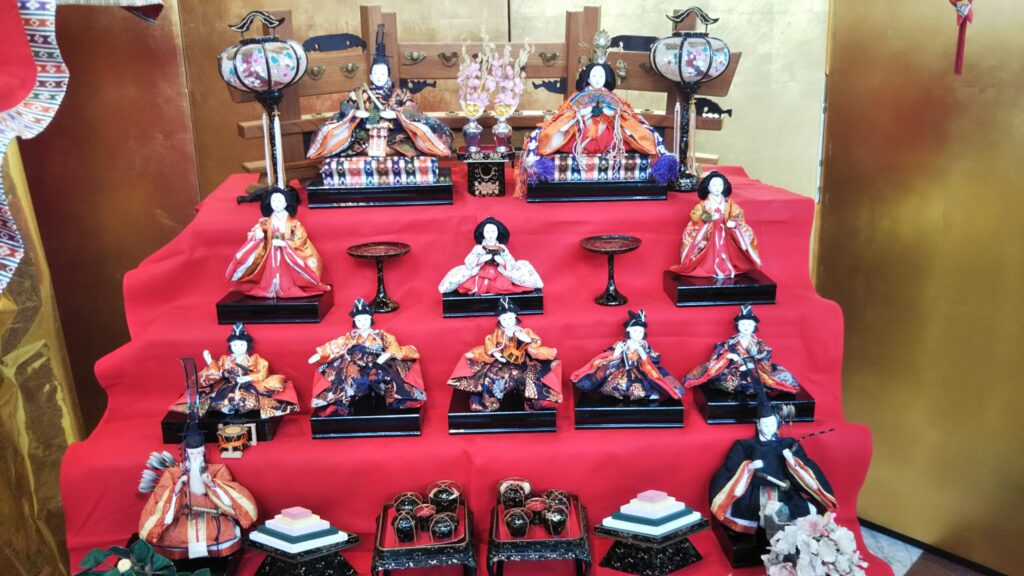Every year on March 3rd, Japan celebrates Hinamatsuri (Doll Festival). It celebrates the growth of the family’s girls. March 3rd is also called girls’ day.
1. Hina dolls

If a family has one or more little girls, they set up a special step-altar at home on which to arrange their Emperor and Empress dolls, called “Hina” in Japanese. Hina dolls are dressed in beautiful Heian-era costumes. Parents hope that their daughter will become as graceful as the Heian nobility.
Platforms covered with a red carpet are used to display a set of ornamental dolls. The top tier holds the Emperor and Empress. The second tier holds three court ladies called san-nin kanjo . The third tier holds five male musicians gonin bayashi. The fourth tier holds two ministers, sa-daiji and u-daijin. The fifth tier holds three helpers or samurai as the protectors of the Emperor and Empress.
People offer these dolls white sweet sake and special foods such as hina-arare and hishi-mochi. Hina-arare are rice cake cubes. Hishi-mochi are diamond-shaped rice cakes.
It is a custom that Hina dolls are set up early February and put away soon after March 3. It is said that if Hina dolls continued to be displayed long after March 3, the daughter would not find a husband soon.
2. Tsurushibina (Hanging Hina Dolls)

A set of hina dolls is normally gorgeous and costs very high. Tsurushibina is relatively cheap because ornaments are made by using old kimono cloth. Hanging them by code, it does not require the space for the arrangement and child can play by touching. There are a variety of ornaments such as fruits, vegetables, fish, and cute animals depending upon districts.
Tsurushibina is said to be originated in Izu Inatori town of Shizuoka prefecture in Edo era, a few hundred years ago. A peach shaped ornament is one of the major and important ornaments used in Inatori. At this time of a year, peach blossom bloom and tells coming of spring. Legend has it that peaches have mysterious power which destroy evil spirits and prolong life.
3. History
The origin of the festival dates back over 1,000 years to Japan’s Heian period (794~1185).
The modern practices of Hina Matsui stem from this time, when the tradition of making simple paper dolls called hitogata began to emerge. The dolls were used as charms to ward off evil spirits. The traditional practice was to set a paper doll afloat down a river flowing into the sea, with the hope that they would carry threats of sickness and bad fortune away with them.
The ceremony changed into the girls’ festival during Edo era (1603-1868) when Japan was peaceful and people enjoyed their life. Hinamatsuri was made one of five special seasonal events:
January 1st : New Years’ day
March 3rd : Hinamatsuri or girls’ festival
March 20 or 21 : Spring equinox day
May 5th : Children’s day or boys’ festival
September 22 or 23 : Autumnal equinox day
Originally boys and girls celebrated Hinamatsuri. After May 5 started to be called boys’ festival in 1948, Hinamatsuri became known as the girls’ festival.
Nowadays, at kinder gardens they celebrate Hinamatsuri by singing a song of Hinamatsuri, and eating special sushi called chirashizushi. Supermarkets sell special confectionaries and chirashizushi. However, March 3 is not a national holiday.
4. Reference
(1) “A complete guide to Japanese culture and scenic spots in English” by Ueda, Goken
Written by Eddy Murayama

Comment